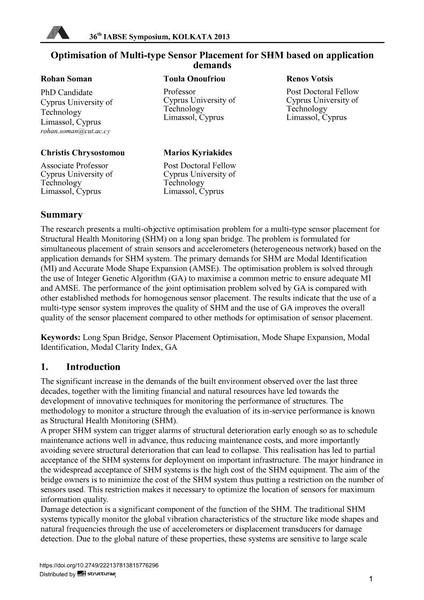Optimisation of Multi-type Sensor Placement for SHM based on application demands

|
|
|||||||||||
Détails bibliographiques
| Auteur(s): |
Rohan Soman
Toula Onoufriou Renos Votsis Christis Chrysostomou Marios Kyriakides |
||||
|---|---|---|---|---|---|
| Médium: | papier de conférence | ||||
| Langue(s): | anglais | ||||
| Conférence: | IABSE Symposium: Long Span Bridges and Roofs - Development, Design and Implementation, Kolkata, India, 24-27 September 2013 | ||||
| Publié dans: | IABSE Symposium Kolkata 2013 | ||||
|
|||||
| Page(s): | 1-9 | ||||
| Nombre total de pages (du PDF): | 9 | ||||
| Année: | 2013 | ||||
| DOI: | 10.2749/222137813815776296 | ||||
| Abstrait: |
The research presents a multi-objective optimisation problem for a multi-type sensor placement for Structural Health Monitoring (SHM) on a long span bridge. The problem is formulated for simultaneous placement of strain sensors and accelerometers (heterogeneous network) based on the application demands for SHM system. The primary demands for SHM are Modal Identification (MI) and Accurate Mode Shape Expansion (AMSE). The optimisation problem is solved through the use of Integer Genetic Algorithm (GA) to maximise a common metric to ensure adequate MI and AMSE. The performance of the joint optimisation problem solved by GA is compared with other established methods for homogenous sensor placement. The results indicate that the use of a multi-type sensor system improves the quality of SHM and the use of GA improves the overall quality of the sensor placement compared to other methods for optimisation of sensor placement. |
||||
